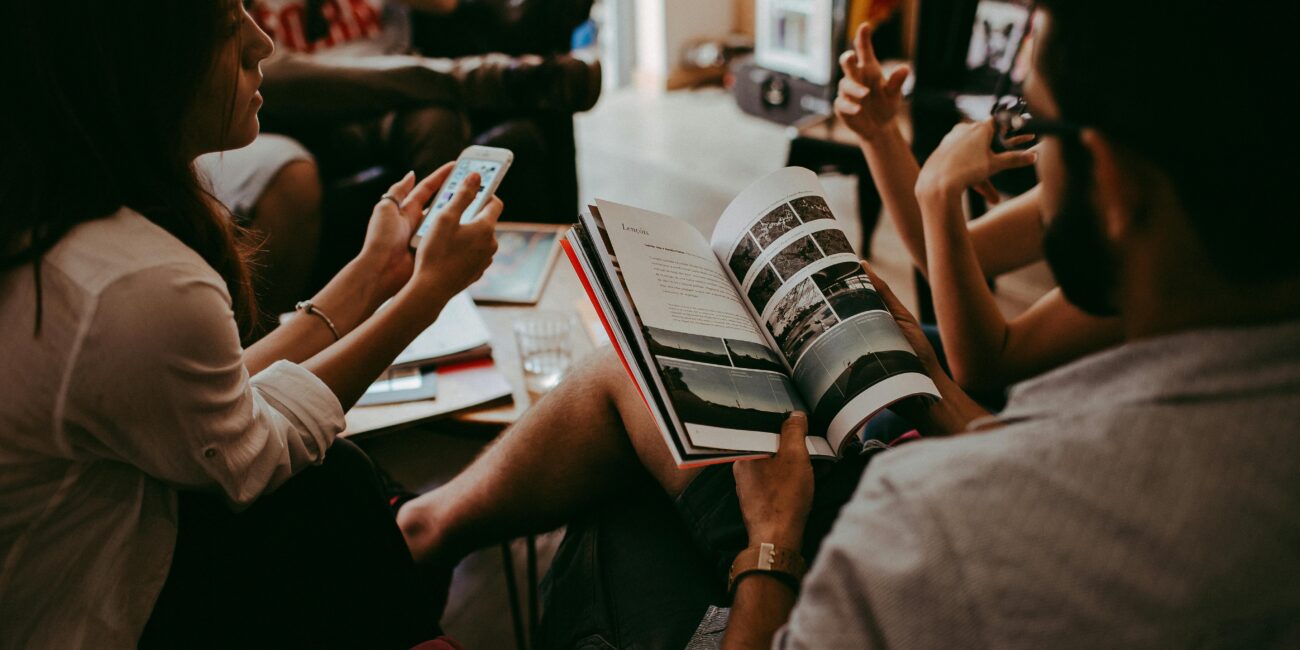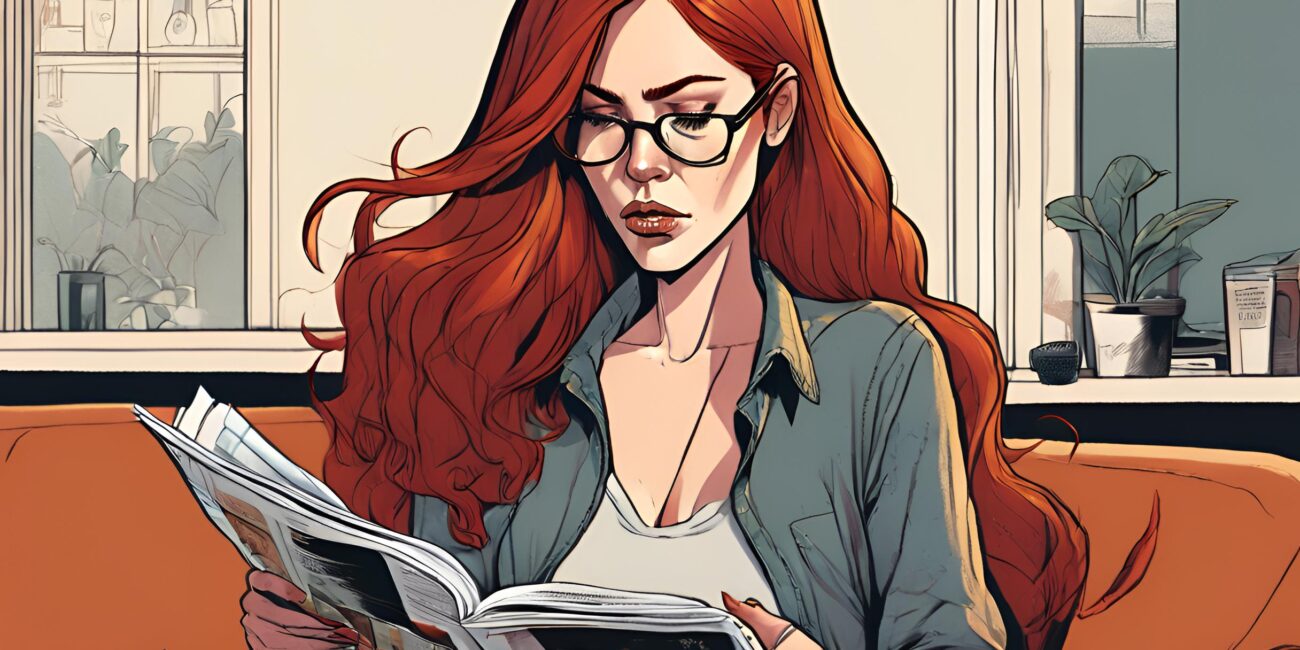The Editor’s Eye: A Glimpse into Magazine Editing

I am a writer first, a magazine editor by profession. Although I studied creative writing (fiction, poetry, and drama), my career turned to something significantly more media-focused: magazine editing. My experience in this genre is quite niche, as I commission and edit content for an architectural and interior design magazine.
I chose this role after several years of writing for various online magazines and, like any literary adventure, it has brought a new perspective to my understanding of and approach to the industry overall.
When I combine my media experiences and compare them to the other writing and editing I’ve done (fiction, academic, and online copy), some very significant differences stand out.
If you want to know the best practices for editing magazine content or what becoming a magazine editor entails, allow me to take you on a tour of all things magazine editing.
Table of Contents

How to Approach Magazine Editing
There are various approaches to magazine editing, but the basics remain pretty universal. To encapsulate the more relatable aspects of the role, I can summarise the magazine editing process like this:
Reviewing the Content
Content can come from in-house or freelance writers. In my case, we receive content from outsourced writers. This means my role as editor begins with:
- Conceptualising the issue
- Compiling topics and finding the content we want
- Finding potential writers
- Commissioning the articles
The more traditional editing part of the job then begins when the content is in and I thoroughly review the submissions. I check that all the requirements for the article have been fulfilled. If anything is missing, I first request more information or content from the writer before I start editing.
Considering the Magazine’s Goals
Once everything has been reviewed and compiled, content editing can begin. When editing magazine articles, you want to look at several key elements, including tone, point of view, audience engagement, and language use.
Your goal is to produce content that aligns perfectly with the magazine’s stance and approach to its overall topic or theme, so always have that in mind.
If it’s a lifestyle magazine, you might be after a personal and casual approach. On the other hand, a business magazine might require more professionalism. In my line, the audience is industry professionals: architects (interior, landscape, etc.), developers, interior designers, and so forth.
They open our magazine to garner insight into industry trends, news, and inspiration. So, too casual a tone might come across as rude or disrespectful—the last thing we want.
Getting Down to the Edits
With all that in mind, I make edits accordingly, often changing anything from a few words that don’t quite work to whole sentences and paragraphs that need rethinking.
I try not to change anything unless it’s sincerely necessary, while still putting the article’s goal first.
This includes reviewing and improving formatting, stylistic, and structural elements. Editing for flow and structure is as essential as choosing the best words or descriptions. This means that the layout of the article and the order of the content also form part of the editing process.
As the editor, you’re also responsible for editing and proofreading headlines and subheadings, and removing anything that isn’t essential to the article.
A Style for Each Type of Content
There are many content types within media publishing like news, ‘How-to’ pieces, and essays. The magazine I edit has three main types: projects, features, and interviews. Although the tone remains largely consistent across the board, the style of each article differs a fair amount.
Projects are factual, submitted more like press releases and edited into our tone. They’re structured according to factors like the project’s context, design process, materials, and challenges and triumphs. Features are opinion pieces about different trends or topics relevant to the current industry, and interviews are, well, interviews.

Writers provide content based on an assigned topic and guidelines. Each type of article needs to be distinctly different so that when a reader opens each new spread, they recognise the type of content based on its formatting. Then, as they read, they’ll also notice the nuances that change.
A simple example is the presentation and layout of a project launch on Hotel Sky in Cape Town versus a feature essay expressing personal opinions on whether cities need more high-rise buildings. That is what makes the journey through a magazine unique and interesting, so you want to adhere to the formatting and style in this context.
Respecting the Writer When Editing for Magazines
Any editor knows balancing editing vs rewriting is hard. Magazines are no exception. Editing an article to perfectly suit the magazine while still respecting the writer’s choices can be tricky.
You want the article to have a personal voice while remaining distinctive to your brand.
The best way to do this is to view the process as a collaboration, meaning:
- Edit with care and only where necessary.
- Be sure not to change opinions or offer ones that may not be true to the writer.
- Stay focused on the quality of the content.
If you commission your media publications’ content, you’ll typically send the edited draft to the writer for final approval or suggestions so they can give their input on the edits.
This is the best place to learn how to navigate editing feedback since sometimes one writer will love your edits, but another will hate them.
If the latter occurs, explain your reasoning to the writer and be open to their requests. If that still doesn’t bring you to a happy compromise, there are two options:
- Relay that the editorial team has made the final call on the decision, or
- Accept their requests and keep those parts as they were (as long as they’re properly written and factually correct).
Common Mistakes Writers Can Avoid to Simplify Magazine Editing
These are some of the most common faux pas I see with submissions and how to avoid them:
Straying From the Topic
Writers can easily avoid this by referring to the brief throughout the writing process and comparing the whole article to the brief once finished.
Waffling
This may be one of the most challenging mistakes in writing and editing. If you’re unsure of what else to say, don’t say anything more. The best thing a writer can do when preparing a magazine article is to research thoroughly and know when to stop typing. Otherwise, an article can quickly become weightless and filled with fluff. In most cases, less is more.
Not Knowing the Magazine
Not being familiar with the magazine’s tone and style is another common mistake. Each writer has their own signature style, of course, but when writing for a media publication you have to adapt your preferences to produce the best-suited article for the magazine.
Missing Deadlines
Meeting deadlines in magazine editing is crucial, and even more so when it comes to print publications. When a writer submits past the due date, one of two disadvantages happens.
Either the late submission gives the editor less time to edit and potentially results in a poorer version of the article, or the late submission causes the article not to make it to print at all.
Neither of these outcomes works well for anyone, so writers should make deadlines a top priority. If the writer can’t make their deadline, they must update their editor immediately.
Tips for Writers When Receiving Editorial Feedback
Seeing changes to your article is never fun or easy, but it’s the nature of submitting to media publications (and any publications for that matter), so it’s important to get comfortable with it.
As a magazine editor, editing for clarity and conciseness, flow, and structure is my focus. When I change, remove, or add anything to the content, it’s with this purpose in mind. Writers should be mindful that it’s with only the best intent that editors make changes or give feedback.
Writers can benefit greatly from seeing the process as a learning opportunity and a chance to hone their skills, so I recommend reviewing the edits and any comments the editor provides and making notes of how you can improve on this in the future. It will no doubt be to your advantage as you navigate writing magazine articles.
Visual Aspects of Magazine Editing
One of the most unique and exciting aspects of magazine editing is that it goes beyond the textual realm and incorporates the visual. As the editor, tailoring content for a magazine format doesn’t only apply to the text. It also applies to the images and other visuals included in the layout.
I always have to consider factors like how the text layout could look, which images would work best with the content, the impact of paragraph and heading lengths, and what should be the focus visually versus what can afford to be highlighted less.

I also review the images when they’re submitted (this is more common in my case than having to source images in-house) and select those that are most suitable to send to our graphic designer.
After editing the text, compiling image selections, and handing the content to our designer, it’s also my responsibility as editor to review the designed article and make suggestions where I think the visual and textual can be better harmonised.
Valuable Skills for Aspiring Magazine Editors
When it comes to magazine editing and media publishing, there are a few particularly beneficial skills you’ll want to develop beyond an eye for grammar and a knack for language.
Problem-Solving Skills
Editing a magazine is often a collection of conundrums that you must figure out. It not only requires editing skills but also the ability to review content and recognise if anything assigned in the brief is missing.
Communication Skills
Because you’re working back and forth with multiple writers at the same time, you need to communicate clearly to get what you want from their article and hopefully avoid that situation where a key element is left out of the text.
Adaptability
You might go into a magazine issue with a very clear and precise idea for the end result, but it won’t turn out exactly how you planned nine times out of ten. With so many people and factors involved, a good magazine editor needs to be flexible and adaptable, willing to adjust where necessary to produce a good issue.
This could be in situations where you have to cut articles that no longer suit the issue or when your visual goal takes an unexpected turn based on the content. At the end of the deadline, the issue needs to be published, so be open to adapting when it will serve you well.
Critical Thinking
Being an editor means looking at everything from a very critical perspective. It may seem harsh, but if you want your magazine to be the best, you have to be critical in how you plan, what content you accept, how you combine the articles to form a cohesive issue, and how you marry visuals and text to produce harmony and achieve your goals.
Curiosity
One of the best parts of magazine editing is that you’re in the perfect position to pursue your curiosity. Publishing interesting and exciting content requires efficient research and innovative thinking. With so many publications around the world, a curious and adventurous mind helps a magazine stand out above the rest.
Magazine Editing: Glimpsing Your Future Career?
If you’ve reached this point and becoming a magazine editor or writer is still on your list of career goals, there’s a very fulfilling and stimulating journey that awaits you.
If this journey intrigues you, take the leap—who knows where your editorial adventure might lead!
This sector of the writing industry combines the best of literary and visual creativity and skill in a way most traditional mediums don’t, which means the opportunities for fun and innovation are endless.
My experience will likely be different from yours in many ways, as each magazine has its own formula and foundation. But, with a keen eye, a curious mind, and the ability to follow goals with precision, magazine editing could hold great potential for you.
If you don’t have all the skills and understanding, the great part of media publishing is that so many of these technicalities can be taught to the right type of editor or writer. Passion and willingness to learn go a long way in this industry, so if the spark is there, go forth with fiery excitement!

Caitlin Hancocks
Caitlin is a writer, editor, and artist from Cape Town. With an Honours degree in Theory of Literature from UNISA, her passion and experience extend across the industry as she continues to explore the world of language and literature.
caitlinhancocks@gmail.com